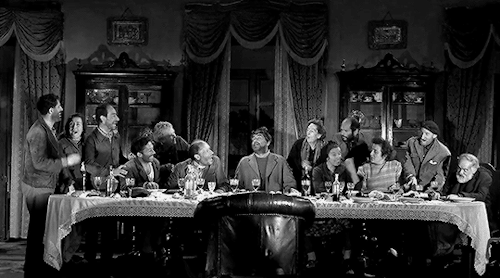$harkToootth wrote:Since I know you're into logic based routing... ever consider those clunky 8 way slide switches? Or is it easier to use a knob where you only get 8 positions (like knobs where you switch diodes).
For reference (clunky 8 way slide switches):
[youtube]http://www.youtube.com/watch?v=uV9-XA5MPwY[/youtube]
I'll level with ya, I'm embracing logic switching because I want to reduce my reliance on mechanical nightmares. It's pretty easy to get a reasonably crafted two position switch for an inexpensive price, but as we place more demands on a switch something gives.
I don't want what gives out to be longevity, so the cost shoots up. I'm not in a position to benefit from bulk pricing on nice and fancy switches (one look at the tires on my car will tell anyone that), so I'm trying to engineer them out as best I can. It's a complex scenario though, as I'll probably get to in a moment.
To answer your question directly: It's easier to use a rotary. You can typically set a rotary to have variable stops (meaning I can order say 100 switches and set them differently to fill the needs of different switch types) and the metal-work for install is something I can do quickly and cleanly "in house". Sliders look cool (even when they're peeking out of a rough and gnarly gash in a case, though that's not my build style), but they are open to dirt and dust, and if I need 3,5, & 6 positions in a given build, that's three different parts I need on hand.
The downside with BOTH mechanical types is that if I want to go directly from state #2 to state #5 I'm going to pick up some transit noise and a probable drop out as I'm frantically ripping through states #3 & 4 while hoping no one notices - or hoping the ripping sound is musically useful. If say I want to actuate that transition 20 times a second I'm fucked, unless there's an element of control at play.
That control is where the big and gooey rat-hole opens up beneath my feet, and I'm currently lathering up in enough wet mud and lipstick so I hope I can pass the notice of some of the rat cretins while exploring their realm. I have plans.
Currently I'm using combinational logic in a few things. Anything that used to use a 4PDT footswitch because of either in/out stupidity or LED indicator issues is now a 3PDT supported by logic, so I can still offer a straight wire bypass and have other shit going on. Another example is one switch changing the behavior of another switch in addition to performing a side function, etc. Those are static states though, they are visible to the operator through toggle orientation or indicator color (Mudlark is an example here).
The downside with inexpensive CMOS switching is that they have a very measurable ON resistances, so I'm okay in switching stuff internally (where I can control through circuit design the magnitude and loading of a signal being switched) but once I need to reach out to rest of world, a parasitic 80 ohms in series with a signal or the absolute maximum allowable pass voltage can be a problem. So, there's still a bit of hunting happening on that front..
Regarding user interface though, where the rubber meets the road, my goals are a highly intuitive assemblage of robust and simple parts that interplay with each other to perform as more than the sum of the actual parts. I believe that will become more and more apparent as stuff is released after my digestion of the fundamental building blocks I need to get there.
All that said, I do know that there will be at least one instance of a rotary switch (or encoder) on something I am working toward in my typical slogging through mud fashion, but I cannot envision my using slide switches unless I fall into a motherlode of them and happen to have a mill sitting in my shop.















